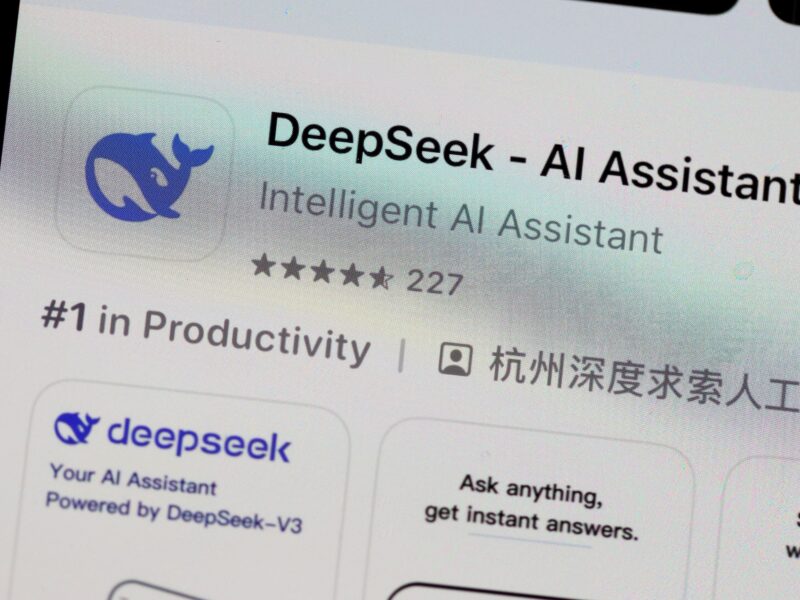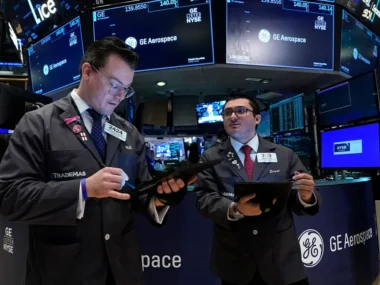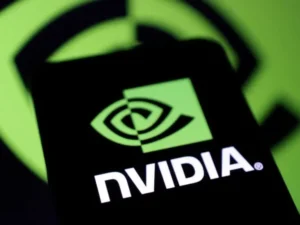A remarkably efficient and powerful Chinese AI model, DeepSeek R1, has disrupted the tech industry and raised concerns on Wall Street.
Developed by DeepSeek, a startup founded just a year ago, R1 has been hailed by prominent investor Marc Andreessen as “AI’s Sputnik moment.” This model rivals well-known systems like OpenAI’s GPT-4, Meta’s Llama, and Google’s Gemini—delivering comparable performance at a fraction of the cost.
DeepSeek reportedly built its base model with just $5.6 million, a stark contrast to the hundreds of millions or even billions spent by U.S. tech giants. Even more surprising, this was achieved despite U.S. restrictions on high-power AI chip exports to China, forcing the company to rely on less advanced hardware.
What is DeepSeek?
Founded in late 2023 by Chinese hedge fund manager Liang Wenfeng, DeepSeek is one of many startups capitalizing on the AI boom that has transformed the tech industry.
Liang, often compared to Sam Altman in China, has become a prominent advocate for AI innovation and investment. His hedge fund, High-Flyer, is dedicated to advancing AI development.
Over the past year, DeepSeek has released several competitive AI models, similar to startups like Anthropic and Perplexity. While its V3 model gained some recognition, its strict content restrictions on sensitive topics related to the Chinese government raised questions about its potential as a global competitor, according to the Wall Street Journal.
However, R1, unveiled last year and launched just last week, has captured widespread attention, particularly due to its remarkably low operating costs. As an open-source model, R1 allows other companies to test and enhance it.
The DeepSeek app has seen a meteoric rise, surpassing ChatGPT on app store charts on Monday, with nearly 2 million downloads.
Why is DeepSeek such a big deal?
AI is a resource-intensive technology, requiring immense power and investment. Leading U.S. tech firms are even acquiring nuclear power companies to meet the energy demands of their AI models.
Last week, Meta announced plans to spend over $65 billion on AI development in 2025. Similarly, OpenAI CEO Sam Altman estimated last year that the industry would require trillions in investments to produce the advanced chips needed for energy-intensive data centers powering complex AI systems.
The emergence of DeepSeek R1, offering capabilities comparable to leading U.S. models at a fraction of the cost and on less advanced chips, has upended the perception of AI’s financial barriers. While skeptics remain, proponents argue that AI will transform the global economy, enhancing efficiency and driving innovation across industries.
Marc Andreessen, co-founder of Andreessen Horowitz, described DeepSeek as “one of the most amazing and impressive breakthroughs I’ve ever seen” in a post on X. If such advancements can be achieved with significantly lower investment, it reshapes both opportunities and challenges for global AI development.
Implications for the U.S.
America’s strategy of leveraging export restrictions to maintain dominance in AI, including President Biden’s tightened chip export policies, has been undermined by DeepSeek’s breakthrough. Despite efforts to limit China’s access to advanced AI chips, DeepSeek has demonstrated that innovation can thrive on limited resources, raising questions about the effectiveness of such sanctions.
This development has also rattled markets. Major U.S. tech stocks faced significant declines Monday, with Nvidia (NVDA)—a leading AI chip supplier—falling 12% in premarket trading. Meta (META), Alphabet (GOOGL), and other tech giants like Marvell, Broadcom, and Oracle also experienced sharp selloffs, signaling Wall Street’s unease over the shifting dynamics in AI.
Are we really sure this is a big deal?
The industry is largely taking DeepSeek at its word regarding its remarkably low costs. While there’s no major dispute, the market’s reaction hinges on the credibility of a relatively unknown company. Notably, DeepSeek hasn’t disclosed the costs of training its model, which may include significant research and development expenses—though it’s unlikely these costs reached billions.
It’s also premature to assume that U.S. tech leadership is at risk. One impressive achievement doesn’t erase years of progress and dominance in AI. A widespread shift in customer preference toward a Chinese startup remains improbable.
“The rollout of DeepSeek’s model has prompted investors to question the lead of U.S. companies, the scale of their spending, and whether such investments will translate into profitability or overspending,” noted Keith Lerner, analyst at Truist. He added that while the cost-saving breakthrough is notable, the substantial investments required for data and infrastructure keep U.S. firms in a leading position.
DeepSeek’s R1, as a consumer-oriented language model, is primarily a competitor to ChatGPT. It has yet to demonstrate its ability to tackle ambitious, industry-specific AI applications that demand massive infrastructure investments.
“Thanks to its abundant talent and capital, the U.S. remains the most promising base for the emergence of self-improving AI,” said Giuseppe Sette, president of Reflexivity, an AI market research firm.











